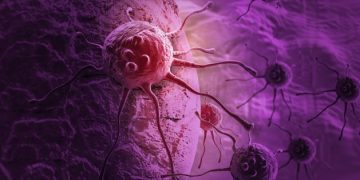AML
AML (Acute myeloid leukemia) is a type of blood cancer that develops in the bone marrow. Normally, the bone marrow makes healthy cells that help fight infection and make other blood components. These blood cells include red blood cells that carry oxygen, white blood cells that protect you from infections, and platelets that help your blood clot properly.
But, in people with AML, the process goes wrong and too many abnormal leukemia cells are made in the bone marrow. These abnormal cells crowd out normal blood cells, so they can’t work properly. This can cause a number of problems, including anaemia and easy bleeding.
Symptoms
The symptoms of AML depend on which type of AML you have and how fast it is progressing. The most common symptoms are anaemia, bruising easily and recurrent infections. In addition, you may have pain and swelling or have trouble concentrating.
Usually, these symptoms go away after you begin treatment. But, if your symptoms don’t go away, you should see a doctor as soon as possible.
Your doctor will probably start you on chemotherapy, a type of drug that kills cancer cells. About 65% of people with AML under 60 years of age who are treated with chemotherapy go into remission or get rid of their symptoms for good.
They might also need additional treatments such as bone marrow transplantation, which is a way to replace your own blood stem cells with healthy ones from another person’s body. This is often done if the patient’s own bone marrow is not working properly or has relapsed (come back).

AML can be diagnosed by a blood test, called a complete blood count, and a bone marrow biopsy. These tests can tell your doctor what type of AML you have, what the leukemia cells look like, and where they are in your bone marrow.
The bone marrow is the soft, spongy tissue inside your bones that helps produce and control the different types of blood cells in your body. It also produces other types of cells, including lymphocytes and granulocytes.
But, in people with AML, too many abnormal leukemia cells are made that crowd out the bone marrow. These abnormal cells can’t grow and divide normally, so they don’t make enough of the blood cells your body needs. This can cause a number of problems, causing a loss of red blood cells and platelets in the body.
Besides that, the leukemia cells can cause infections and bleeding. They can also spread from the bone marrow to other parts of your body, such as your lymph nodes or spleen.
It is important to keep your blood counts as close to normal as possible, especially the white blood cell count. A higher white blood cell count can indicate an infection, so it is important to get it checked regularly.
AML is usually more serious than chronic myeloid leukaemia, which usually causes less of a problem with the white blood cells in your blood. But, they can both be dangerous if left untreated.








